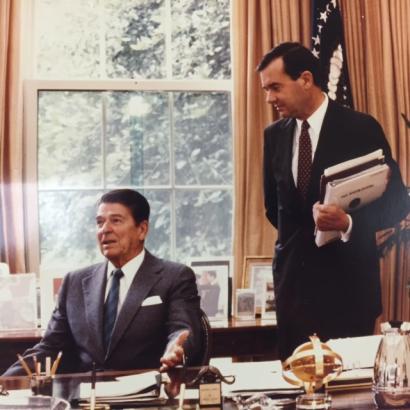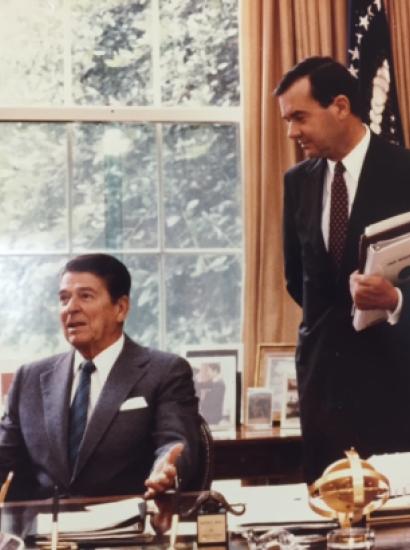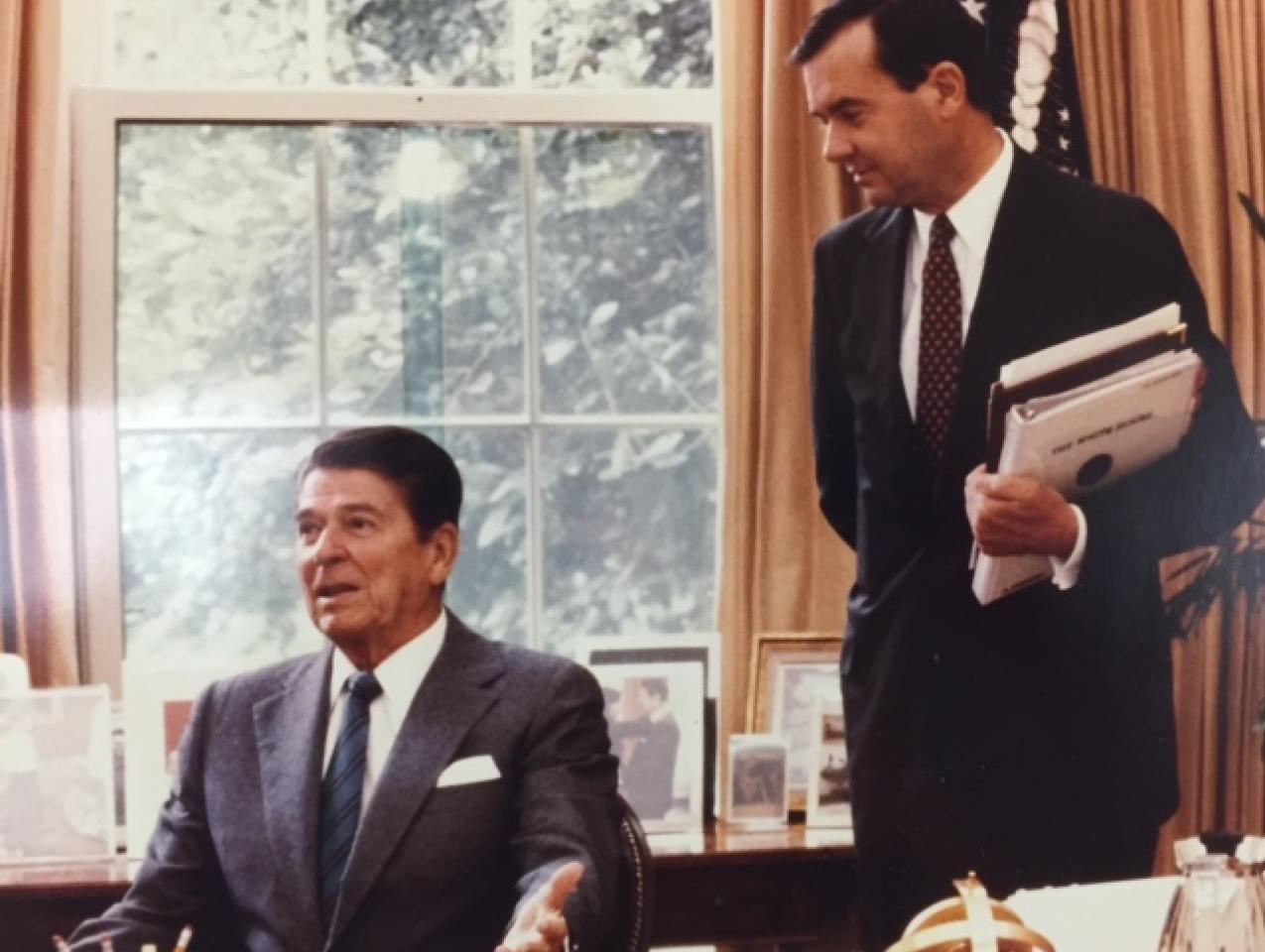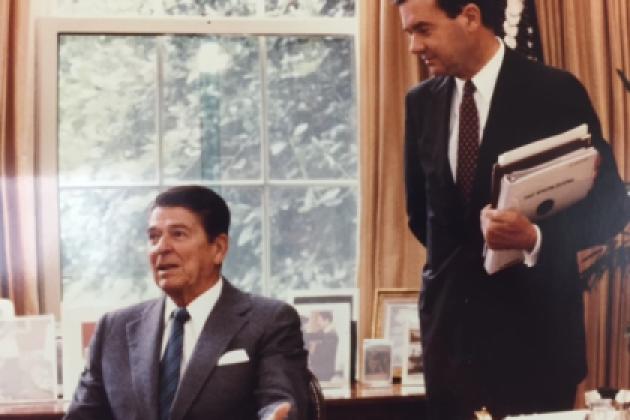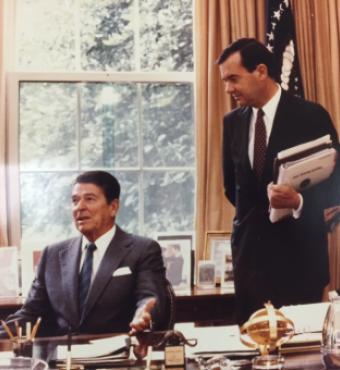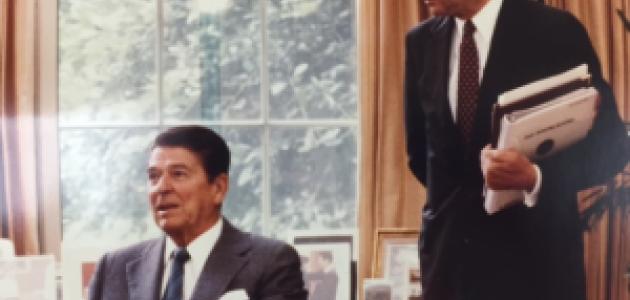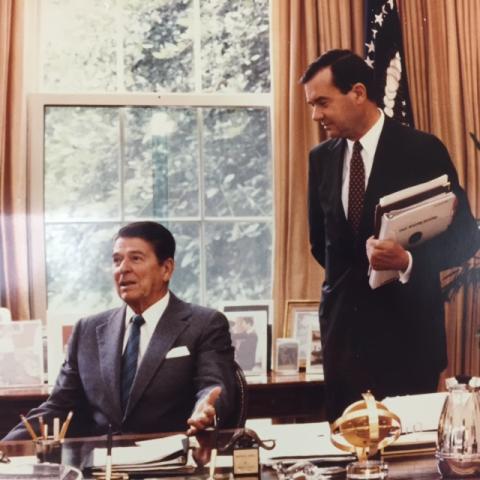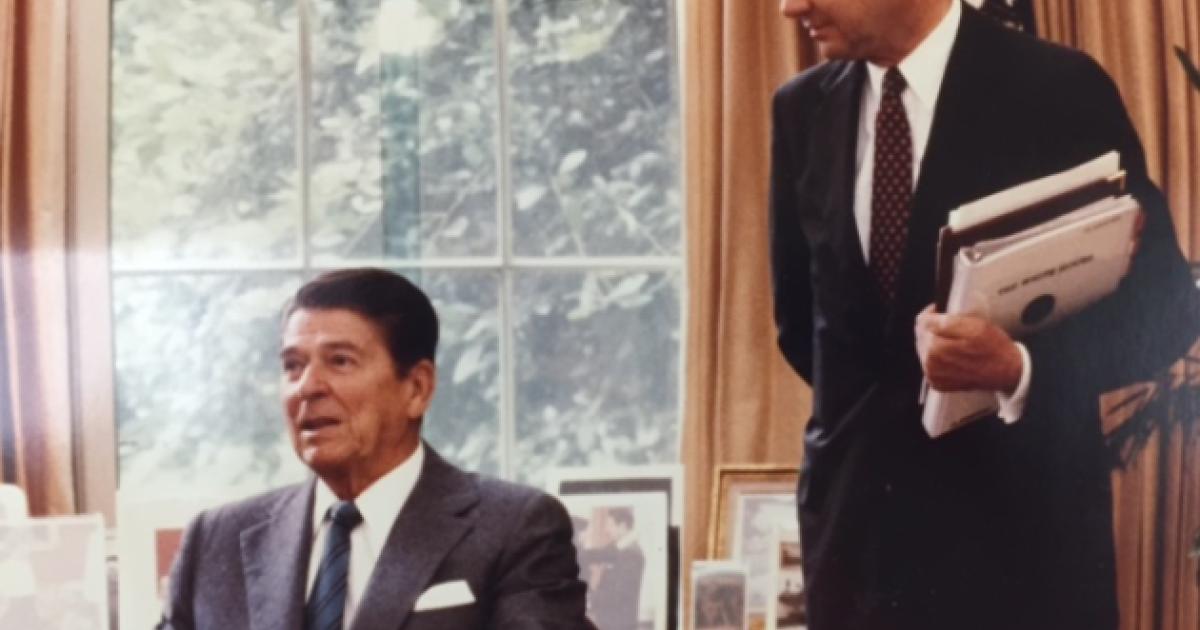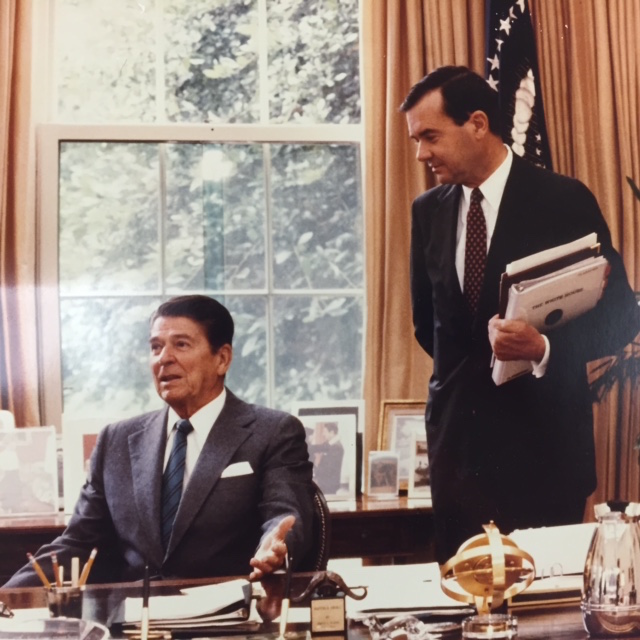
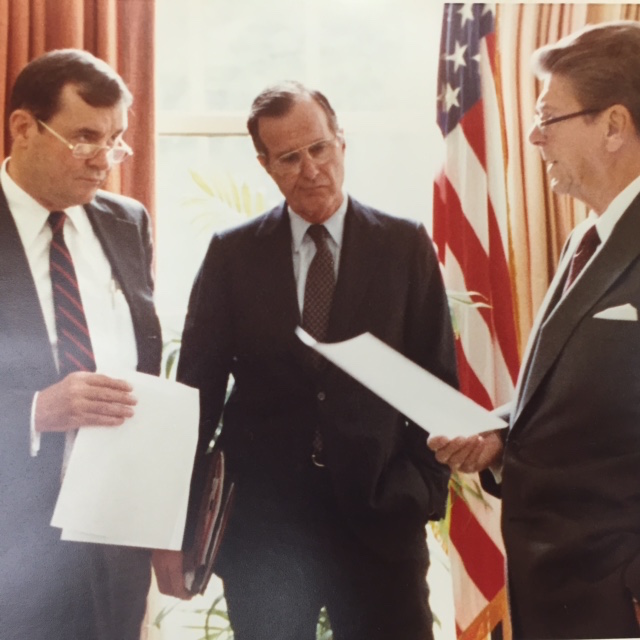
This week Hoover Library & Archives opened the papers of William Patrick Clark, one of former US president Ronald Reagan’s most trusted advisers. During a long career of public service, Clark served as a US deputy secretary of state, national security adviser, and secretary of the interior. During Ronald Reagan’s presidency, Time magazine referred to Clark as the second most powerful man in the White House.
William Patrick Clark was born in Oxnard, California, on Oct. 23, 1931, a fifth-generation Californian. After studying briefly at Stanford and the University of Santa Clara, he attended Loyola Law School in Los Angeles. His study was interrupted when he was drafted into the US Army in 1953, where he served in Germany and specialized in counterintelligence. Upon returning to California after service abroad, Mr. Clark established a law practice and became involved in state politics. He joined Reagan in his first campaign for governor of California in 1966 and served as his chief of staff in Sacramento. During Reagan’s term as governor, Clark also served as a California Supreme Court judge, but left the post to assist with Reagan’s presidential campaign and to serve as one of Reagan’s most trusted aids for foreign affairs. During his time at the White House, Clark advised Reagan on Soviet and Middle Eastern threats, arms control, military spending, and interventions in Central American conflicts. He also played an important role in recruiting younger talent, such as Edwin Meese, another of Reagan’s advisors whose collection is held at Hoover Archives.
Containing correspondence, speeches and writings, memoranda, reports, notes, legal and financial records, and photographs, the newly opened William Patrick Clark papers provide eyewitness accounts and historical details that will no doubt enhance scholarly understanding of the Reagan administration and American foreign policy during the Cold War.




